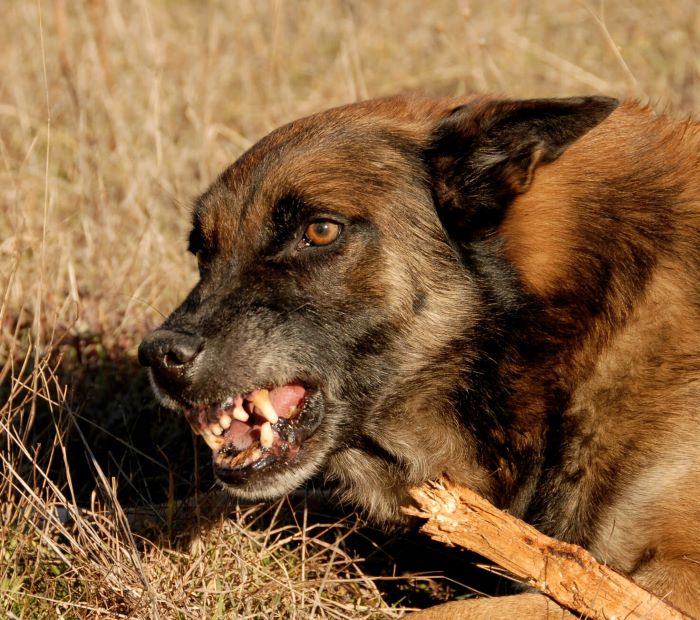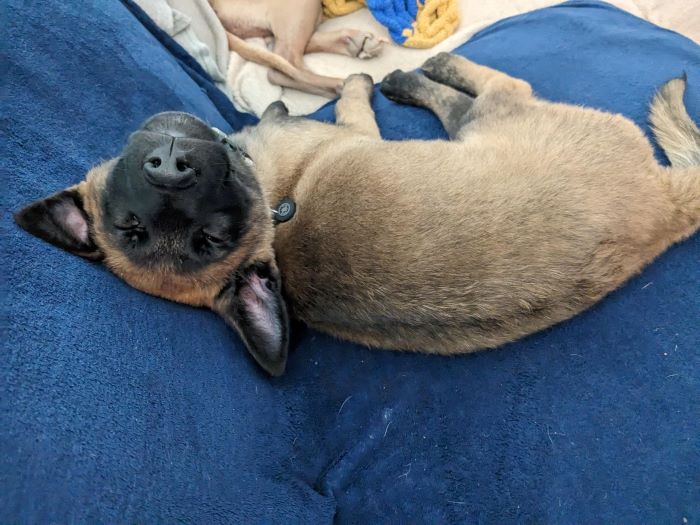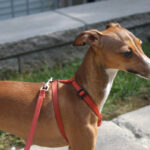The Belgian Malinois is an energetic and driven breed that excels at many canine jobs like police work, military service, search and rescue, and more. They are extremely loyal dogs that bond very closely with their owners. However, their protective instincts can lead to guarding behaviors that need to be properly managed. Understanding what drives this behavior and how to curb it is key for Belgian Malinois owners. In this article we talk about How to Handle the Guarding Behavior of Belgian Malinois.
Table of Contents
What is Resource Guarding?

Resource guarding refers to dogs displaying possessive, protective, and aggressive behaviors in order to keep items, spaces, people, or other dogs away from others. It stems from anxiety over losing access to things the dog finds valuable. Guarding most often occurs around resources like food, toys, beds, people, etc. But it can progress to guarding locations in the home, yard, or when on walks.
Belgian Malinois are prone to guarding due to their backgrounds as working dogs. They have strong drives to “work” by controlling access to their family, home, belongings, etc. This serves an important purpose for police and military dogs. But as family pets, it needs to be dialed back through proper management and training.
Signs of Guarding in Belgian Malinois
Guarding behaviors in the Belgian Malinois can include:
- Stiffening up, freezing, staring, growling, or snapping when approached while eating or playing
- Not allowing people or other pets near “their” locations like furniture, rooms, yard, etc.
- Blocking access to people or hiding important items like toys or leashes
- Biting or attacking other pets or people who approach guarded items or spaces
- Refusing to give up toys or high-value items to owners when asked
The earlier guarding issues are identified and addressed, the better the outcome typically is. Left unchecked, guarding has a tendency to get more severe over time.
Why Do Belgian Malinois Guard?
Guarding behaviors stem from the Belgian Malinois’s innate drives and bond with their owner. The root causes include:
- Strong working drives – Their backgrounds as guard dogs for property, livestock, police work, etc. makes them predisposed to controlling resources.
- Anxiety and stress – Fear of losing access to valuable items kicks in survival instincts that translate to guarding.
- Pack mentality – Viewing people/pets as threats to their rank and possessions.
- Protectiveness – Deep devotion to owners causes some dogs to guard their people or spaces associated with them.
Tips for Preventing Guarding
Belgian Malinois owners should start prevention from day one:
- Socialize extensively as a puppy around people, dogs, sights and sounds. This makes them more comfortable in different environments.
- Avoid letting them have high-value treats or new toys until they have mastered giving up lower-value items on cue.
- Hand feed a portion of meals during the first year to establish you as the food provider.
- Practice having guests periodically add tasty treats to their bowl so strangers seem non-threatening.
- Teach them from puppyhood that allowing people and pets to approach them when resting or eating leads to rewards.
Use rewards-based training that relies on establishing positive associations with the things that trigger guarding behavior. Prevent rehearsal of guarding by managing the environment and not allowing the dog to practice the unwanted behavior.
Addressing Existing Guarding in Belgian Malinois
If guarding behavior has already developed, take steps to resolve it:
- Hire a certified behaviorist or trainer that uses force-free behavior modification. Attempting overly harsh corrections can make guarding worse.
- Identify your dog’s triggers and work to condition emotional responses to them using desensitization and counterconditioning.
- Reward relinquishing items on cue and permitting approach/handling when in possession of triggers.
- Avoid scolding or punishing guarded behavior – this can reinforce anxiety.
- Use baby gates, crates, doors to limit access to guarded items/areas as needed to prevent rehearsal of the behavior when unsupervised. Structure and management is key.
- Change your response – rather than trying to forcefully remove items, call them away from the area using a happy tone, then reward.
- Rotate high-value toys only under supervision so they don’t become a long-term guardable resource.
- Use “drop it” and “leave it” commands paired with rewards to reinforce giving up items as a positive behavior.
In severe guarding cases, medication may be warranted to take the edge off while behavior modification training is underway. Some dogs also benefit from structured outlets for their drives such as dog sports.
The Takeaway
Left unchecked, resource guarding in the Belgian Malinois can pose risks to family, friends, and pets. But understanding the root causes of the behavior and smart preventative training from day one can help avoid issues. Consistent rewards-based training to establish comfort with approach/handling when in possession of triggers is key. In severe cases, professional intervention is recommended. With time, consistency and patience, this behavior can be successfully managed long-term in most dogs. I sincerely hope you find this “How to Handle the Guarding Behavior of Belgian Malinois” article helpful.

Dr. Kate Bruce is a highly experienced veterinarian with a Master’s degree in Veterinary Medicine and over a decade of expertise in animal behavior and holistic pet care. She combines traditional and modern practices to offer exceptional advice on pet health and wellness. Explore more at petsconsultancy.com and follow her on Instagram for expert tips.








